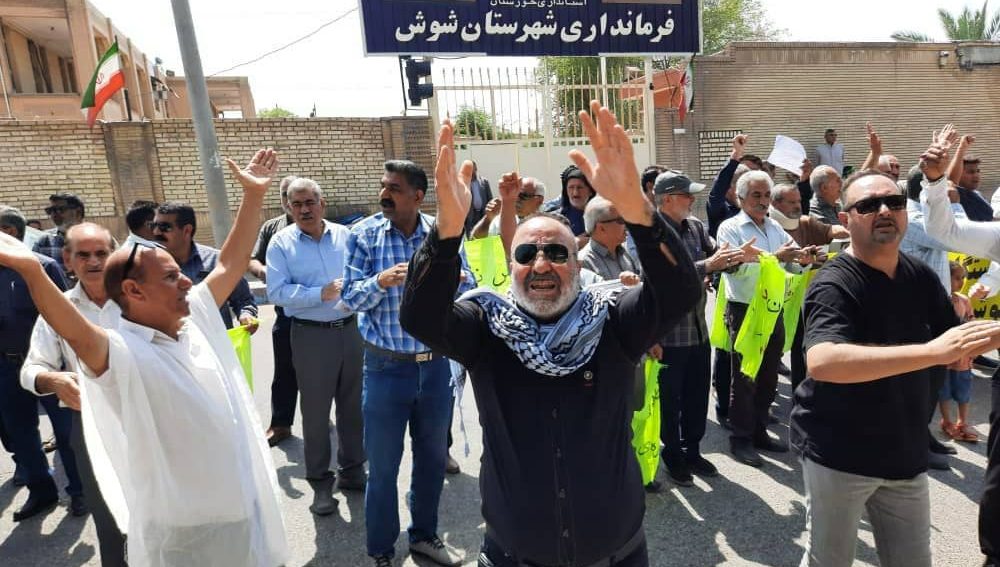

Various segments of society, from retirees to healthcare professionals, took to the streets to voice their grievances against the regime. This widespread discontent was rooted in economic hardships, deteriorating living conditions, and a deep-seated demand for justice and reform.
A notable force in these protests were retirees, who, accounting for 1,362 protests, voiced their frustrations over unfair wages, unpaid salaries, and poor living conditions. The depletion of Social Security and Pension Funds by successive governments amplified their outcry for justice.
The country’s workforce also rose in protest. On 592 occasions, Iranian workers, exemplified by a significant event at the Ahvaz factory of Iran National Steel Industrial Group (INSIG), demanded job security, fair wages, and humane working conditions. Their eight-day protest against the termination of 21 colleagues concluded with the reinstatement of these workers and concessions from the factory’s management.
March 14 – Tehran, #Iran
Large crowd of locals in the city's Afsariyeh district are seen chanting: "No fear! We're all together!"#IranRevolution pic.twitter.com/EUJaAuqvFA— People's Mojahedin Organization of Iran (PMOI/MEK) (@Mojahedineng) March 14, 2023
Educators and students joined this national outcry, with 141 teacher protests and 56 student protests. Their concerns ranged from the poisoning of female students to the privatization of schools and the employment of inexperienced teachers. The participation of high school students in three separate protests indicated the depth of discontent among the youth.
The healthcare sector was not immune to this unrest. Nurses and doctors staged a total of 106 protests, highlighting issues such as job dismissals, poor working conditions, and mandatory overtime. Market vendors, too, expressed their discontent through 133 protests, addressing issues like exorbitant taxes, rent hikes, and unstable exchange rates. Their grievances highlighted the economic challenges faced by small businesses in Iran.The protests transcended professional boundaries, with farmers, truck drivers, architects, engineers, bakers, lawyers, and taxpayers collectively reporting 690 protests.
These demonstrations were centered on economic hardships, poverty, and general dissatisfaction with government policies. Despite facing a formidable security apparatus and systemic disregard by state officials, Iranians displayed remarkable organization and perseverance. The use of social media for coordination enabled simultaneous gatherings in multiple cities, signifying a unified purpose.
#Iran News in Brief
Amid state efforts to crack down on weekly protests in Sistan and Baluchestan province, the commander of the province’s State Security Forces announced the deployment of armored vehicles to "enhance security."https://t.co/itwPKqNkQo pic.twitter.com/MF6q4t0NFH— NCRI-FAC (@iran_policy) November 16, 2023
The nationwide uprising of 2022, triggered by the death of 22-year-old Mahsa Amini, catalyzed the 2023 protests. A total of 524 protests were directly linked to this uprising, showing its enduring impact.
Environmental concerns also came to the forefront. A significant protest in Ardakan, lasting three days, highlighted the importance of environmental protection and the public’s determination to address these issues.

MEK Iran (follow us on Twitter and Facebook), Maryam Rajavi’s on her site, Twitter & Facebook, NCRI (Twitter & Facebook), and People’s Mojahedin Organization of Iran – MEK IRAN – YouTu







